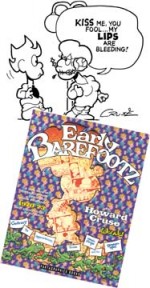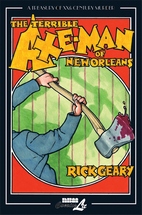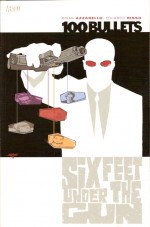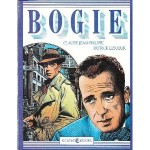
By various (Fantagraphics Books)
ISBN: 978-1-60699-152-7
Mome is a quarterly compendium of sequential narratives; a magazine that looks like a book, featuring strips, articles, graphic artworks and occasionally interviews from and about a variety of talented, dedicated creators ranging from the internationally renowned to the soon-will-be. It is where the smart kids with the sharpest pencils, shiniest pens, biggest brushes and best software go to play before they blow your minds in great big award-winning graphic novels. It is intense, sometimes hard to read and crafted to the highest production standards. Considered by most to be the successor to Art Spiegelman’s Raw, it doesn’t come out nearly often enough.
Once in awhile, as with this issue, it pushes the envelope of conventional taste and morality so if you are liable to be offended by the depiction of sex acts and adult themes stay away from this volume: The rest of us will just be grown ups without you…
This volume is perfect for newcomers to jump aboard as four continuing features (Fuzz & Pluck, Almost Sound, Nothing Eve and Devil Doll) all take a break. The Summer magic begins here with a glorious and challenging fantasy from The Partridge in the Pear Tree (Shaun Partridge on his tax return) & Josh Simmons (don’t miss his superb graphic novel House) as a troubled woman lands in a baffling Never-land of institutionalised racism and joins a disquieting pixie child in a hunt for ‘The White Rhino’…
Animator and cartoonist Olivier Schrauwen returns with another panchromatic hard-centred extravaganza in ‘The Imaginist’ and comics super-star Gilbert Hernandez opens the black and white section with ‘Roy in “Who Are Your Heroes; What Are Your Heroes?‒ a boldly excessive progression that examines the cultural landscape which shaped the jolly reprobate from Love and Rockets.
‘Evelyn Dalton Holt’ by D.J. Bryant is based on the Steve Ditko story “Driven to Destruction†and delivers a witheringly painful, sexually explicit neo-noir psycho-thriller that will delight all fans of hard-edged fiction, whilst Tim Lane’s ‘Hitchhiker’ offers a far gentler surprise behind its tense edgy monochrome façade.
‘Vote Lily at the Dog Show’ by Conor O’Keefe is simply stunning: classic watercolour fantasy with a modern sensibility as a talking wren goes searching for his lost mate at a county fair aided by the gamin Deidre, a worthy successor to Little Nemo himself: surreal, nostalgic, winningly compulsive…
The black and white history lesson ‘The Spiritual Crisis’ of Carl Jung’ by animator Robert Goodin is a surprisingly tasty confection, dry and sharp and this edition ends with another multi-media delight from T. Edward Bak, who continues his graphic fascination with historic Russia and 18th century German naturalist Georg Wilhelm Steller, with part 3 of ‘Wild Man Chapter 2: A Bavarian Botanist in St. Petersburg, part’ and as ever the tome is graced with a selection of incidental drawings by Kaela Graham
Whether you’re new to comics, currently searching beyond the mainstream or just want something fresh; these strips and this publication will always offer a decidedly different read. You may not like all of it but Mome will always have something you can’t help but respond to. Why haven’t you tried it yet?
Mome © 2010 Fantagraphics Books. Individual stories are © the respective creator. All Rights Reserved.









